1. Jobs in Visual Communication
1.1. Careers in visual communication can involve designing and laying out text, graphic elements and photos for digital and traditional publications and companies.
1.1.1. According to the U.S. Bureau of Labor Statistics, the median income for a graphic designer in 2010 was $43,500 with 279,000 jobs and an expected 13% increase in the next decade.
1.1.1.1. Free available open data and open source analytic tools have led to an increase in jobs for people who work with data in journalism and strategic communication. These jobs require people to analyze, interpret and present large data sets using visual tools.
1.1.2. Successful designers need artistic skills and a solid foundation of design principles (typography, color, line and composition) as well as working knowledge of Adobe Creative Suite, Photoshop, Javascript, HTML and CSS.
1.2. Visual communicators can work in publishing, packaging, digital imaging, computer graphics, website development and digital photography.
1.2.1. Designers are commonly employed in the following areas:
1.2.1.1. Advertising and public relations: 8%
1.2.1.2. Newspaper, periodical, book and directory publishers: 9%
1.2.1.3. Computer systems design and related services: 3%
1.2.1.4. Specialized design services: 9%
1.2.1.5. Printing and related support activities: 6%
2. Types of Design
2.1. Image-Based design is using photos, paintings and drawings as tools to convey powerful messages, moods and emotions. People can respond to images instinctively based on their personalities, associates and previous experiences.
2.1.1. Example of photographic design from Volkswagen Ad
2.1.1.1. Example of photographic design on the cover of The Economist
2.1.2. Example of drawing design from The New Yorker
2.1.2.1. Example of painting design from Time
2.2. Type-based design is designers using typography or handmade lettering to convey a message.
2.2.1. Example of type-based design from the The New York Times
2.2.1.1. Example of type-based design medical ad
2.2.2. Example of type-based design from Time Magazine
2.2.2.1. Example of type-based design from an advertisement
2.3. Symbol/logo design is designers creating a logo or symbol that identifies a brand or product and clearly represents the company's vision to the public.
2.3.1. Example of broadcast networks logos
2.3.1.1. Example of Google's company logo
2.4. Infographic design consists of highly condensed displays of data and information. An infographic is a means of visualizing data sets to tell stories with various presentation formats.
2.4.1. Example of infographic from The New York Times
2.4.1.1. Example of infographic from The New York Times
3. What is visual communication?
3.1. Visual communication is a catch-all term that can include photojournalism and photo editing, multimedia storytelling and editing, documentary storytelling and editing and traditional videography and editing in the media industry.
3.1.1. Images, typography, color, symbols, illustrations, video and infographics are visual elements used in design.
3.1.1.1. Design in strategic communication refers to the use of text and graphics to create a message that appeals to the right target audience to promote an idea, product or service.
3.1.1.2. Design in news and magazines is various visual elements arranged for online and print publication that appeal to a target audience.
4. Visual communication at the MU
4.1. At the Missouri School of Journalism, visual communication includes photojournalism, videography and design.
4.1.1. It is important for every student or professional working in journalism and strategic communication to understand the role visual communication plays.
4.1.2. Students who are interested in visual communication can major in Visual Editing and Management, Strategic Communication: Art Direction, Strategic Communication: Video Storytelling, Photojournalism, Convergence Photojournalism, Design or another interest area.
4.1.2.1. Many students gain visual communication and graphic design experience at the Columbia Missourian, Vox Magazine, Mojo Ad and AdZou.
4.1.2.1.1. Students at Vox Magazine design the cover of the weekly magazine.
4.1.2.1.2. Students at the Columbia Missourian design the front page of the daily newspaper.
4.1.2.2. Students can work in visual communication through coursework and elective classes in Convergence, Photojournalism and the Radio-TV departments.
4.1.2.2.1. Students in the Convergence department design graphics for their stories.
4.1.2.2.2. Students in the Photojournalism department take photos for many different outlets associated with the school and outside of it.
4.1.3. To view more about the majors students can work in visual communication, go the Undergraduate Programs page
